It’s been a while since my last post. Summer, sun and travelling have gotten in the way. Now it seems like autumn has started, returning with colder weather and shorter days.
We were lucky to capture the last warm – or rather hot – and sunny days in Bavaria. Only a 3,5 h trip from where we live, there is this beautiful town of Füssen. It’s situated in the region Allgäu somewhat right in the middle of Bavaria. And what can I say – I love this little town and its surroundings. It has some mountains and lakes as well as one of the most well-known German tourist attractions – Neuschwanstein Castle (which is actually located in Hohenschwangau some two kilometres away).
I’ve been to Füssen several times already. My grandparents used to live here and throughout my childhood we’ve visited them during summertime. Later on I went there with my mum but also the past years with my husband. For me it’s my feel-good, comfort place. The place I long to be when I don’t feel my best and things are just blah… but aside from that Füssen is a perfect place to relax, hike, bike and swim for everyone.
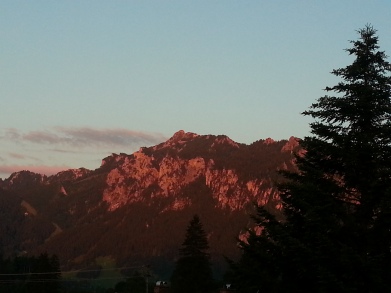
View from our rental apartment.
This time around we had a vacation rental with a view of the two tallest mountains of the area – Tegelberg and Säuling – as well as a minor peek at the Neuschwanstein Castle. It’s been perfect. Watching the mountains with paragliders trundling down was just so beautiful and relaxing.
Where to stay:

View of Neuschwanstein castle from a pasture right next to our rental.
We’ve always found the best way to stay – especially if you’re on a budget – is to rent an appartment. They are so many on offer, it’s easy to find one.
But also staying on a farm has its charm. If you are willing to stay a couple of kilometres outside of town, there are a lot of good options that won’t cost you a fortune. It’s probably especially interesting if you’re travelling with kids.
Hotels are usually a bit on the pricier side. But you can also find some good bed&breakfast options on the Füssen tourist information website.
What to do:

Hohenschwangau castle – view from a scenic point close to Neuschwanstein.
As I’ve already mentioned, Neuschwanstein Castle is one of the main attractions of this area together with the older castle of Hohenschwangau. The sight of the Neuschwanstein Castle exterior alone is breathtaking. The interior probably not so much. Since the castle was never finished, there are just a few rooms to visit inside the castle itself. The tour is pretty quick. About 20 minutes and you’re done. After waiting in line for a ticket for about an 1 hour (or longer) and traipsing up the hill, this can be a bit disappointing. There is more to see at Hohenschwangau Castle, which is a little bit older and used to be the main living place for Bavarian king Ludwig II.

Neuschwanstein castle from Marienbrücke.
If you want to have a truly stunning view of Neuschwanstein Castle and its surroundings, you have to walk up to Marienbrücke. It’s the view you most often see on postcards or posters.

Another sight – the Lech fall.
Aside from the castles, Füssen (and the surrounding areas) offer a variety of minor sights. There are some churches like St. Coloman and the Wieskirche as well as the Hohes Schloss in Füssen and the Monastery Ettal.

Monastery Ettal
Also the city of Oberammergau is worth a visit with its Lüftle paintings on the house fronts and the Passion plays every ten years (next plays take place in 2020).

Oberammergau – Lüftle painting on Ludwig Thoma’s birth place.
Apart from all the sights nature is of course the biggest attraction of them all. There are so many hikes and bike tours you can do here that it probably takes several years to do them all. This time around we took it easy and embarked on some less strenous tours.

Hopfensee
If you like bike riding, a tour around lake Forggensee could be just your thing. It’s an easy tour with just a little bit of up and down and most of the time you have a great view of the lake and lots of restaurants and cafes to stop and refresh. The best thing, if you are too lazy to complete the whole round, you can just take the boat to bring you back to your starting point.
If you are looking for a nice walk/hike that isn’t too demanding, I can recommend the walk along the Alpsee (lake), crossing the border towards Austria and stopping at the restaurant “Zum Schluxen” – which is said to have been a resting stop for king Ludwig II when he was travelling to castle Linderhof (another attrachtion worth visiting – by the way). You can take the same way back or walk along the Roman street or the Kratzer hill towards Füssen. One stop just between the German/Austrian border is the Walderlebniszentrum (forest experience center), which offers some great activities and walks for children and adults.

Paraglider jumping off the Buchenberg.
For a walk/hike with a view, the Buchenberg Alm (alpine pasture) is a good place to go. You can take the chair lift up (and down), walk around the scenic tour on top, have a break with a great view of the valley and several lakes at the Buchenberg Alp and walk or take the chair lift down. If you like to go higher up, you should try the Tegelberg which has a cable car going up and down. Both mountains are also starting points for paragliders and hang-gliders, which you can watch jumping off the mountain to glide down to the valley.
Of course there are a lot of other tours and alps that are great too. The Füssen tourist information has put together some great information on them.
And then there are the lakes… the biggest one in the area is the Forggensee. But there are also several other lakes that invite to swim, walk, boat and relax. One of my favourites is the Hopfensee. It’s a two hour tour walking around it and has several places where you can swim. The best thing: swimming while enjoying the fantastic view of mountains and Neuschwanstein castle. Perfect!
Where to eat:
Eating out in Füssen and neighbouring villages can be somewhat of a challenge. A lot of restaurants are very touristy – which means they are pricey and the food is reminiscent of fast food. Since we usually stay at a vacation rental we don’t eat out every day. But here are some places I can recommend:
Ritterstubn, Füssen – touristy but good food and fun
Madame Plüsch, Füssen – pricey but good food and great interior
Olivenbauer, Füssen – theme restaurant with good food and good prices (they also offer home-made beer and schnaps)
Markthalle Füssen – for a quick breakfast or lunch
Saray Kebab, Füssen – Turkish food for a change, really good food for cheap.
Wirtshaus im Weinbauer, Schwangau – best Schweinshaxn (according to my husband), but pricey
Zum Bären, Eisenberg/Zell – traditional restaurant in beautiful setting
Wiesbauer, Hopfen am See – probably not the best food, but a beautiful location and a great stop when walking around lake Hopfensee
All in all, I can only recommend to give this beautiful area a chance. If you ever happen to visit there, don’t just go for Neuschwanstein castle, like most tourists do, but also stay to enjoy the nature and charme Füssen and the surrounding areas have to offer!

Just love the cows…
- Sorry that a lot of websites are only available in German. I hope that at least the pictures and some of the information are helpful!


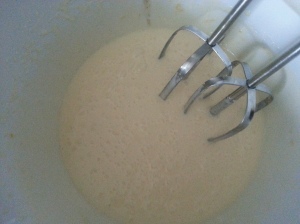

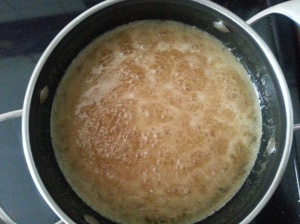


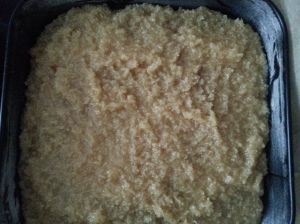



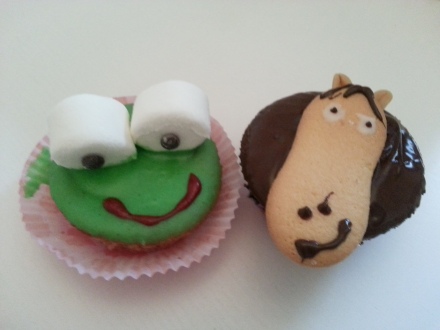
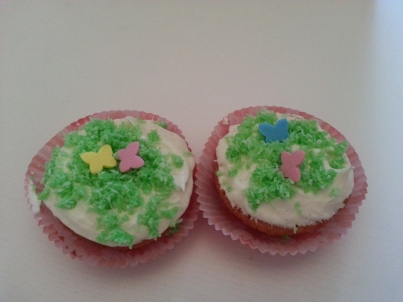














 Peel and mash them (easy if you have a masher – not so easy with a fork)
Peel and mash them (easy if you have a masher – not so easy with a fork)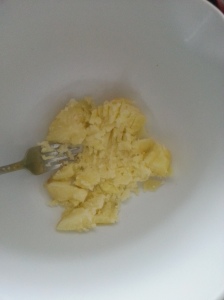 Add flour and salt and knead, knead, knead… until you have a nice smooth ball. Let rest for about 20 minutes.
Add flour and salt and knead, knead, knead… until you have a nice smooth ball. Let rest for about 20 minutes.
 Cut into thumb wide pieces.
Cut into thumb wide pieces. You may indent them with a fork or form balls or mark or roll them in any form you like. 🙂
You may indent them with a fork or form balls or mark or roll them in any form you like. 🙂
 Drain. Ready! Easy, right?
Drain. Ready! Easy, right? Add scallions and mushrooms and let them fry for a bit – until mushrooms turn a soft and brown.
Add scallions and mushrooms and let them fry for a bit – until mushrooms turn a soft and brown. Add tomatos and some water.
Add tomatos and some water.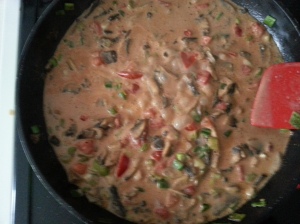 Season with salt, pepper. At the very last add minced parsley.
Season with salt, pepper. At the very last add minced parsley.





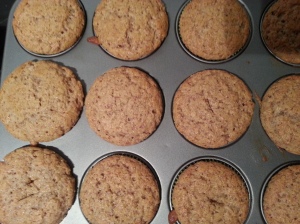
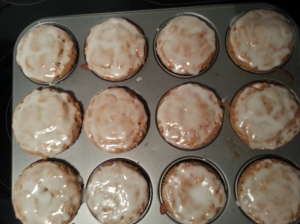



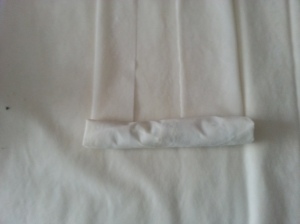

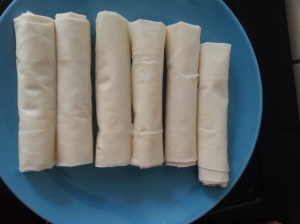
 Fry rolls until crispy and golden brown.
Fry rolls until crispy and golden brown.






